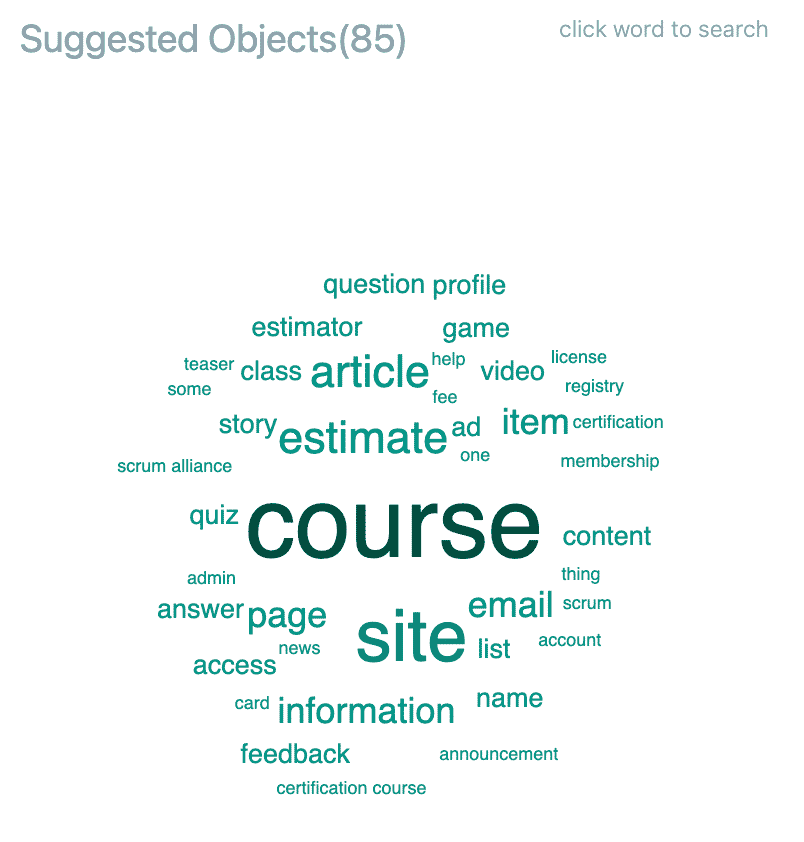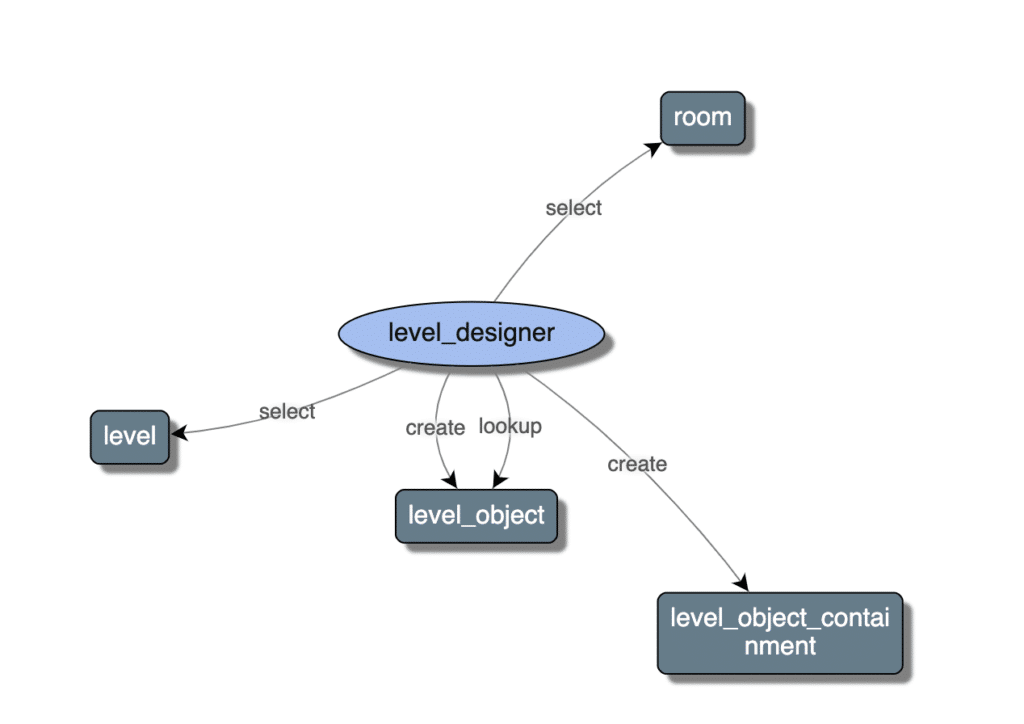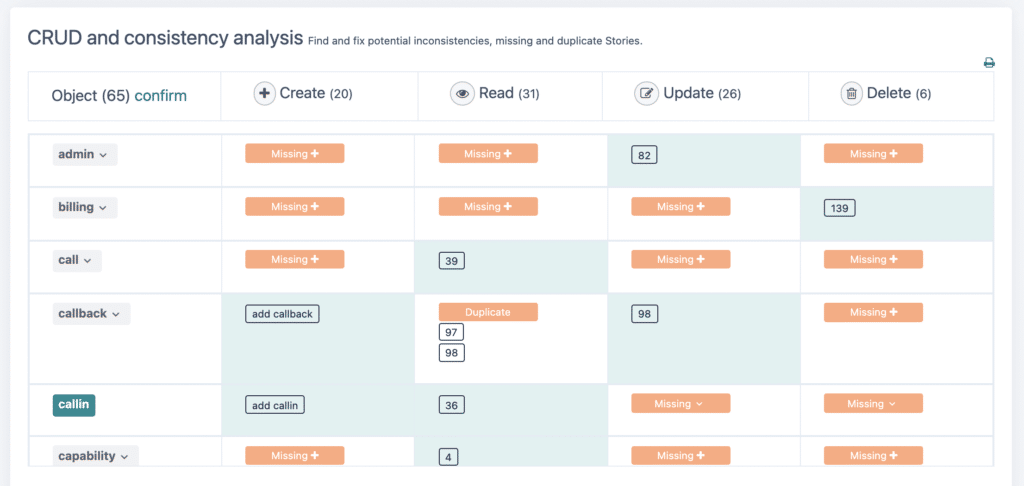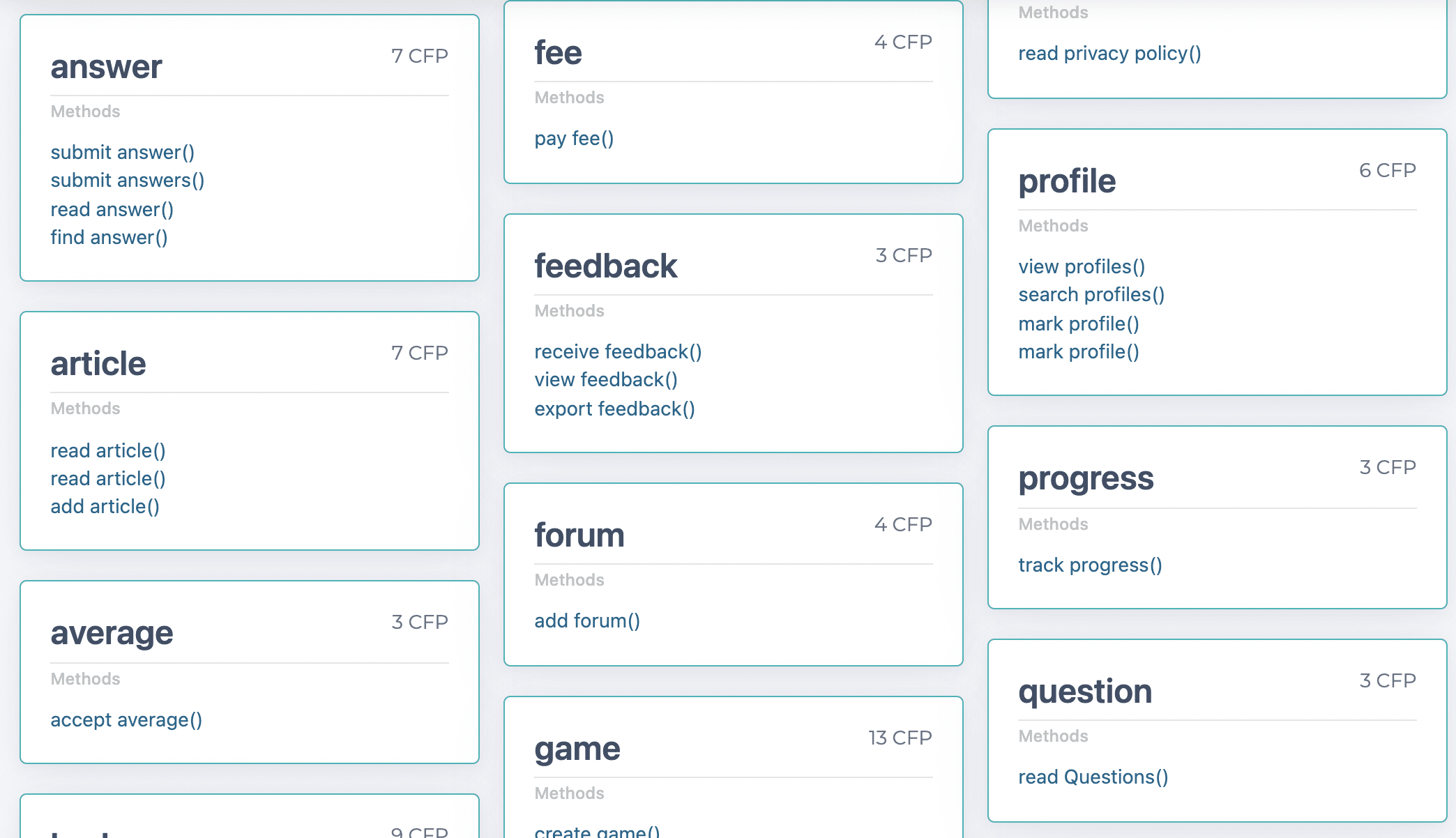What is Object Detection?
Object detection in the context of interpreting software requirements is the activity to identify data groups that relate to a single user recognisable object type. As ScopeMaster scans the words of your software requirements is detects potential candidate object type names. This enables it to compile a suggested data dictionary.
Object Detection, Automated

ScopeMaster analyses the text of your functional user stories (or software requirements) and detects the most likely candidate objects types and their data movements. In single user story, you might reference multiple object types, ScopeMaster can handle this.
It finds all the objects mentioned in all the requirements whether or not they might have clear functional intent, it then uses this information to help the requirements author gain greater insight into how the requirements might be interpreted or misinterpreted.
This is information is then used for CRUD analysis, class diagramming and user – object mapping

ScopeMaster uses the objects detected to build up a use case model diagram
Object types detection, Automated
Object type detection is about identifying the user-recognisable groups of data. Each object type might have different instances or even sub-types, but from a software perspective these are usually one object type. An object type might have many attributes too. Let us look at some examples:
Automobile is an object type, whilst car, electric car, classic car, even truck are just types of automobile. Number of doors, engine size, engine type are attributes of the automobile.
In a financial system we might record invoices. Typically an invoice is not an object type but it is a report that combines at least two user recognisable object types: invoice headers and invoice lines.

ScopeMaster uses the detected object types to build up a suggested CRUD matrix

ScopeMaster uses the detected object types to build up a suggested Class Diagram
The Benefits of Object-type Detection
Object types are the second most important part of a system (after the user). It is absolutely essential in all software systems to know what Object types (groups of logically assembled user recognisable data) that you are handling.
Consistency – naming objects consistently is important
Size – correctly identifying all the object types is the cornerstone of functional sizing
Data maintenance – detecting the object types helps to describe what functionality is going to be needed to maintain the data of a system.
